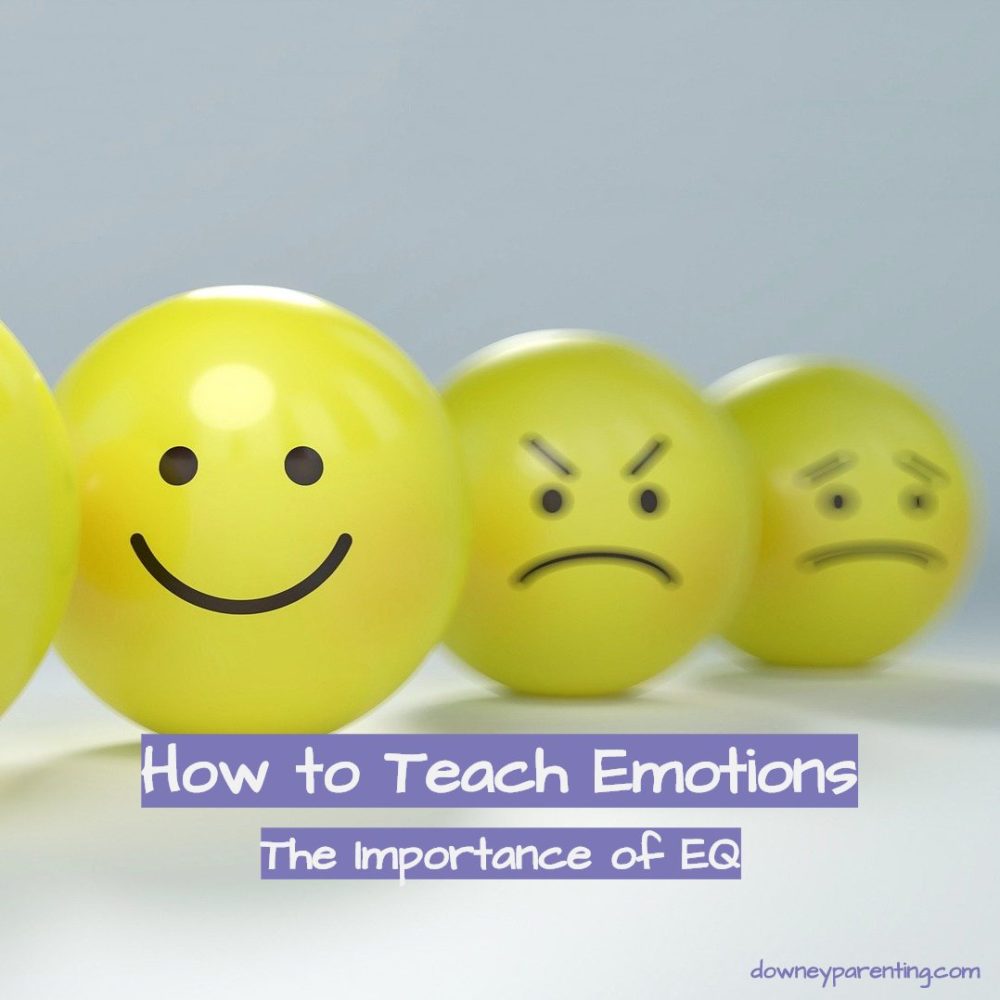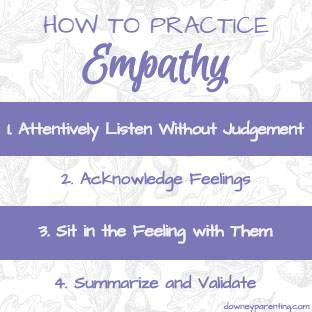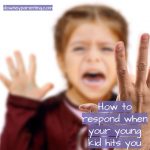
Emotions matter.
The ability to understand your anxiety will help you focus better on a daunting work task. Understanding your partner’s point of view will enable you to constructively handle conflict. Managing your anger when your child hits allows you to remain calm and not join in the chaos.
Emotional intelligence (or sometimes called the emotional intelligence quotient, EQ) is the ability to identify and manage one’s own feelings as well as identify the feelings of others. In simpler terms it’s the ability to self-soothe, have awareness and acceptance of emotions and practice empathy.
And EQ is important. In fact, some employers include EQ questions in the interview process. And some argue that EQ is more important that IQ, stating a high EQ increases your chances of success.
Which means, as parents, it’s important we teach emotions to help foster our children’s EQ.
How to Teach EQ
The best way to teach emotions (and to teach most things) is to model. Focus on increasing your own EQ.
Self-Awareness
You can’t control when you experience a particular emotion but you have some control over how long the emotion lasts. Practicing certain techniques will enable you to feel more in control of the emotion.
The first step is having self-awareness of the current emotion you are feeling.
Acknowledge the feeling and embrace it. If possible, name the feeling in the moment and say it out loud “I am feeling mad right now.” or “I am anxious.”
This may seem silly, but saying it out loud enables not only you to acknowledge the feeling but also teaches your child different feelings.
Self-Regulation
“What do you do with the mad that you feel?”
-Mr. Roger’s
All feelings are acceptable.
Big kids do cry because big kids feel sad. Parents get mad. And that’s okay because ALL emotions are okay.
Let me repeat that again, ALL emotions are okay. It’s what we do with the energy behind the emotion (our behavior) that matters.
To ensure our behavior is acceptable, there are three rules to remember (and we can teach our children):
- Be nice to yourself, don’t hurt yourself
- Respect others, don’t hurt others
- Be kind to your environment, don’t hurt your environment
After you have acknowledged and felt an emotion, practice a healthy self-regulation technique:
Take deep breaths or practice meditation.
Take a walk.
Call a support person.
Practice mindfulness.
Journal.
Empathy
Practicing empathy enables you to recognize how someone else is feeling. And the more empathy you show, the higher your EQ.
Instead of focusing on how to change or “fix” another person’s feelings, empathy focuses on connection and trying to understand (or feel) another’s emotions.

- Attentively Listen without Judgement. Practice listening to someone else’s perspective without the pressure to solve anything. You don’t have to agree with what they say, but you can accept they are entitled to how they feel.
- Acknowledge Feelings. Look for feelings and say them out loud “You seem mad.”
- Sit in the Feeling with them. Avoid saying things like, “you’re alright” or “calm down.” Instead, say “this is hard” or “I can’t imagine how you are hurting right now.”
- Summarize and validate. Repeat what you heard in your own words to ensure you are understanding and validate how they are feeling. Again, you don’t have to agree with them but you can acknowledge their right to how they feel.
Empathy is not feeling sorry for someone (sympathy) nor is it permissiveness. We can acknowledge how someone feels about a limit we set without changing the limit.
The more we practice empathy with our children, the more we teach our children to be empathetic. And the more empathetic we are, the higher EQ we will have.
Practice, Repair and Repeat
Emotions are messy. And they can be difficult, unpredictable and uncomfortable.
Depending on how well your needs are being met, you might not respond the best every time. And that is okay! Because we are all human and humans make mistakes.
Kids need to learn what to do when we make mistakes. And the best way for them to learn? Modeling!
When you struggle with an emotion, own it. Repair the relationship and reconnect with your child. “Mommy was mad. I yelled and it is not okay for me to talk to you like that. I’m sorry. I will try to take deep breaths next time, can you help remind me?”
If you find yourself struggling to manage or teach emotions or if you are looking for assistance practicing how to repair, I encourage you reach out for support.


